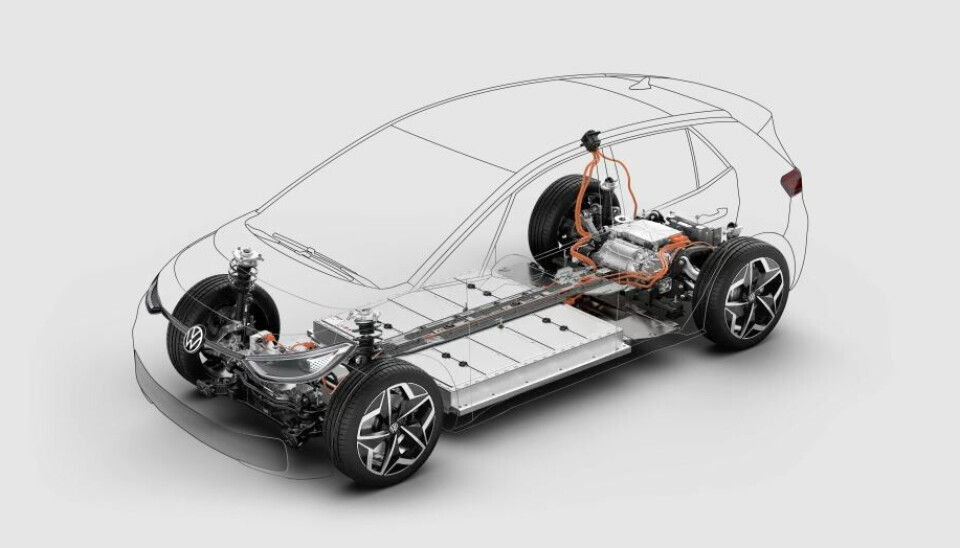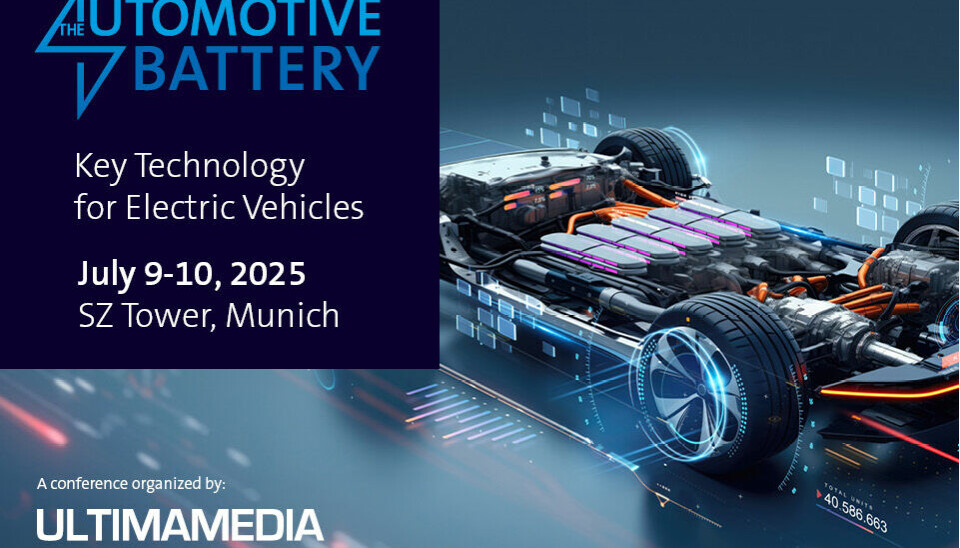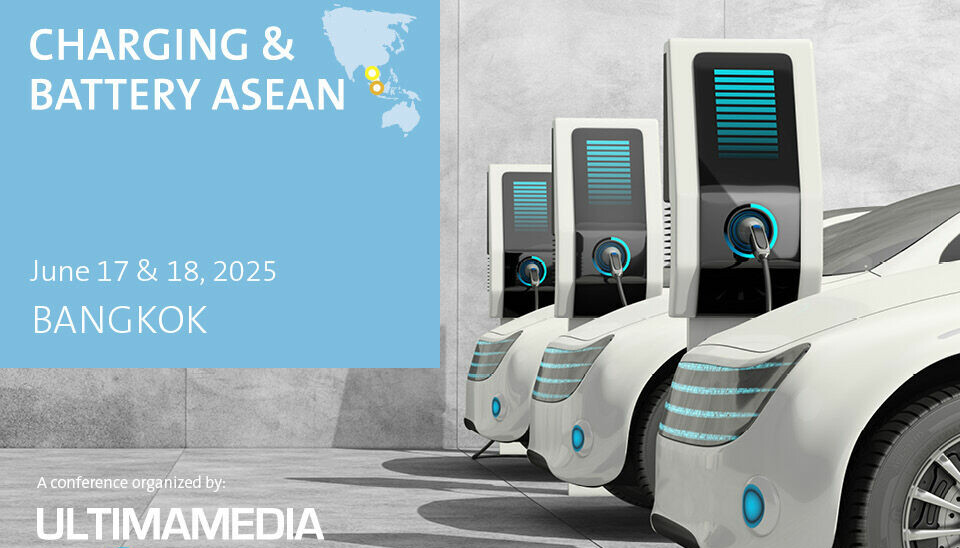Modular Systems for Electromobility
These are the Future Platforms of Car Manufacturers

Never before has a platform strategy been so important and at the same time so easy to implement as with the electric car. But what new modular systems are German manufacturers planning and when will they hit the market? We summarise.
Oliver Zipse also joins the shell game players. And he couldn't have chosen a better place for this coming-out. Because in none other than the gambling metropolis of Las Vegas, the BMW CEO unveiled the Vision DEE study at a major keynote at the CES electronics fair in January 2023. And it is not only a strong statement for the merging of the virtual world and reality, for unstoppable digitalisation or the infotainment of the future, and moreover, as a sleek reinterpretation of a BMW 2002 with all sorts of electronic gimmicks, a spectacular eye-catcher. But above all, the handy and, for BMW standards, surprisingly consensus-friendly notchback sedan at the time offered the most concrete outlook on the Neue Klasse. At the IAA in the following September, the OEM followed up and presented the Vision Neue Klasse for the first time, a vehicle that visually is likely to be very close to the end product.
BMW's hope rests on the Neue Klasse
The Neue Klasse does not refer to just any new segment that the Bavarians want to tap into, like back in the 1960s, when there was a big gap between the Isetta, BMW 600 and 700 on one side and the Baroque Angels on the other, which BMW closed with the Neue Klasse as a precursor to the 5 Series, thus securing its survival. "But this is the toolkit for our future," says Development Board Member Frank Weber: An architecture or a set of components that is to form the basis for all upcoming group products from Mini to Rolls-Royce. A uniform platform, then, on which new hats are always placed for new models, to stay in the explanatory pattern of VW patriarch Ferdinand Piech, who is considered a pioneer of this automotive shell game.
Strictly speaking, the Model T, with which Henry Ford initiated the industrialisation of the car, was already a platform car that could cover numerous model variants with one architecture. But the idea was really perfected by the former VW boss Ferdinand Piech, who, building on the experiences with the PQ34 and PQ35 platforms in the compact class, delivered his masterpiece with the so-called MQB. Because this Modular Transverse Toolkit, with the Golf as a showcase model and over two dozen derivatives, is considered the most important success factor for Lower Saxony in the compact class and was at the same time a model for similar constructions by all competitors.
Because on the one hand, a consistent platform strategy guarantees enormous economies of scale and thus attractive prices or high returns. And on the other hand, it enables quick model derivations with comparatively little effort - and thus, in the best case, an attractive product range.
Electrification needs central platforms
But that was just the prelude. Because with the electrification of the model ranges, the cost pressure increases on the one hand and thus the necessity of high volumes: The more models stand on one platform, the faster the unit costs can be reduced. And on the other hand, flexibility increases. Because the electric architectures usually resemble a skateboard with axles and drives on the outside and the battery in between, performance data can be designed as variably as the number of engines, the choice of driven axles and the battery capacity. And if the physical dimensions no longer cooperate at some point, you simply stack two batteries on top of each other like GM did with the electric Hummer.
Maximum quantities on one side and maximum flexibility on the other: No wonder that almost all brands and corporations rely on such more or less uniform platforms. Especially since they can implement the much larger leaps in innovation in electromobility compared to combustion engines across their entire range more quickly.
How big these leaps can be is demonstrated by BMW with the Neue Klasse, which is set to debut in 2025 initially with two models in the style of the 3 Series and X3: Because in addition to the new infotainment functions as shown in Las Vegas, more recycled material than ever before, and a new generation of more efficient engines, it will primarily receive a new battery generation. Manufactured from self-developed round cells, it is expected to enable an enormous technological leap. The next generation of the Neue Klasse is expected to offer at least 30 percent more range than current models, explains Mike Reichelt, Head of Neue Klasse at BMW, at the Mobility Circle 2024. In addition, they want to use more secondary raw materials and design the vehicles to be circular from the start to further reduce the ecological footprint.
For the global triumph of the New Class, BMW is investing billions: According to production director Milan Nedeljković, corresponding vehicles as well as batteries will also be manufactured in Shenyang, China from 2026. For this, the joint venture is investing the equivalent of over 1.3 billion euros in the site.

Volkswagen's New Class is called SSP
What the New Class is for BMW, the Scalable Systems Platform (SSP) is intended to be for VW, forming the backbone for almost the entire model range of the group. Unfortunately, VW boss Herbert Diess apparently wanted to pack a bit too much into this kit at the time. Significant efficiency improvements in the engines and more capacity in the batteries were promised, as well as dramatic cost reductions in production. And the car's software architecture was also to be reinvented with the group subsidiary Cariad for SSP. This apparently overwhelmed Diess's team - and the patience of the supervisory board. Because the SSP is far from starting in the middle of the decade. Not least this delay cost Diess his job and his successor Oliver Blume has already put the prestige project Trinity as the first VW on the new platform to the test. If the car comes at all, then not before 2032, and even bigger question marks hang over the Ingolstadt counterpart Audi Artemis.
In the medium term, however, SSP is supposed to become a super platform, alongside which MQB or MEB will shrink to toy building kits: Originally, 40 million cars were mentioned in Wolfsburg, which are to be built on an SSP basis for almost all group brands. Whether this still seems realistic given the current situation in Wolfsburg remains to be seen.
MEB and PPE remain the focus of Volkswagen
Not least because of the delay, two other building kits in the group are gaining importance beforehand. The first electric architecture MEB, which has so far stood for the Wolfsburg ID family from ID.3 to ID Buzz, serves as the basis for the Q4 at Audi, for the Cupra Born at Seat, and for the Enyaq at Skoda, will be significantly modernised again and is expected to support nearly 70 models by 2028.
In addition, the Premium Platform Electric (PPE) comes into focus, which Audi is developing together with Porsche as the backbone for the mid-range and upper class. The two group subsidiaries have big plans with the PPE family: The first Audi based on the platform is the Q6 e-tron, followed by the A6 e-tron as a saloon and Avant.
Porsche initially developed the electric Macan on this basis. And of course, colleagues at Bentley and probably those at Lamborghini have already set their sights on this architecture.
Mercedes does not commit to a single platform
While BMW and VW want to manage with one platform in the medium term, Mercedes is affording itself four architectures, which will cost the Swabians around 40 billion by the end of the decade: Because the demands on the core brand differ too much from those on AMG and especially on the vans, so that three birds cannot be killed with one stone. And even though the Swabians actually only want to offer electric cars by 2030, they are leaving a back door open for markets with less green perspectives, for which they are affording themselves a separate platform with greater drive flexibility.
The role of this buffer platform is taken over by the Mercedes Modular Architecture MMA, which is designed for vehicles up to the size of the C-Class and will start in 2024 with the first models of the newly positioned, thinned-out, and upgraded compact class around CLA and GLA. Although it is primarily optimized for electric drives, it can also accommodate combustion engines in the future.
Exclusively electric will be the MB.EA, the electric architecture for all upcoming EQ models in the core business. It replaces the current EVA2 platform of EQS & Co and makes a significant leap in efficiency, cost, range, and charging speed, promises Chief Development Officer Markus Schäfer, drawing attention to the range record holder EQXX. "From the in-house engines to the next battery generation to a new operating software, a lot of the new architecture is already in there."
Above the MB.EA is the AMG.EA platform with a stronger focus on performance than efficiency. The first model expected here is an electric successor to the AMG GT 4-Door in 2026, with a performance brand E-SUV announced in November 2024 likely to follow a little later. For the special requirements in the commercial business with Sprinter & Co, the team in Sindelfingen is developing the Van.EA architecture, which will debut with the next generation of the Sprinter.
One-Size-Fits-All threatens to dilute the models
Although the all-encompassing electric platforms are the dream of all controllers, they also carry the risk, even more than in the combustion world, of diluting the character of individual models or entire brands. Because as technology continues to converge, the drive loses significance, and performance increases with electrification become inflationary and therefore fade as a distinguishing criterion, engineers find it correspondingly difficult to give their cars an individual character. Few know this better than the development team at Porsche within the VW Group, which therefore revealed the first details of the new Macan early on to distinguish it from the Q6 from the start.
While the two PPE offshoots will share platform achievements such as good space utilisation with plenty of knee room even for backbenchers and the 800-volt architecture, as well as engines with up to 450 kW or 612 hp system output and around 1,000 Nm of torque, Porsche places emphasis on a distinctly dynamic setup and goes to great lengths to achieve this: For the more powerful models of the next Macan, the Swabians use a so-called performance rear axle, move the electric motor particularly far back, and thus achieve a slightly rear-biased weight distribution. Because the power distribution between the motors is also dynamically adjusted and Porsche relies on mixed tyres with even greater differences than before, the Macan is supposed to accelerate out of corners more agilely than ever before.
In addition, there is a completely revised double wishbone front axle, which promises improvements in responsiveness, steering precision, and straight-line stability with dissolved steering planes. For the top versions, Porsche also has an electronically controlled rear axle differential lock in store for even more excitement. And both the steel and air suspension will in future have adaptive damping that works with two-valve technology, allowing it to react faster and offer a greater range.
The rear-axle steering, which is still relatively rare in this segment, should also help with cornering, which Porsche at least wants to offer as an option - even though it's hard to imagine that Audi won't also offer it: It allows angles of up to five degrees, makes the car even more agile in corners, facilitates manoeuvring with a turning circle reduced by around one metre, and increases stability on fast straights because it virtually extends the wheelbase there. And on top of that, it enables a 15 percent more direct steering ratio on the front axle, which is supposed to make the Macan even more manoeuvrable.
The battery is also expected to set standards
But Porsche not only wants to be sporty on the road, but also at the charging station: In the field of tension between weight, range and charging time, the Swabians have therefore opted for a battery of around 100 kWh for the Macan, with estimated ranges of around 500 kilometres, and have pulled a few new tricks to optimise travel times: The Macan achieves a charging capacity of 270 kW and can thus be charged from five to 80 percent in less than 25 minutes. Secondly, the Swabians are introducing so-called bank charging for their BEV: At DC charging stations with the appropriate technology, the batteries are virtually divided into two batteries, which can be charged in parallel at a 400-volt charging station without an additional HV booster and are thus full much faster.
On one side, there's sister company Audi with comparatively high production numbers, and on the other, Porsche, which refuses to be labelled as a junior partner and instead focuses on the sex appeal of sportiness - of course, such vanities might seem a bit silly from an outside perspective. But firstly, this might be familiar to anyone who didn't grow up as an only child. And secondly, customers of the PPE models can only benefit in the end: With the Q6 and Macan, instead of twins with different makeup, there are cars with a distinct character - and the risk of confusion is eliminated. Because just because two do the same thing, doesn't mean the same result comes out in the end.
This article was first published at automotive.eu

















